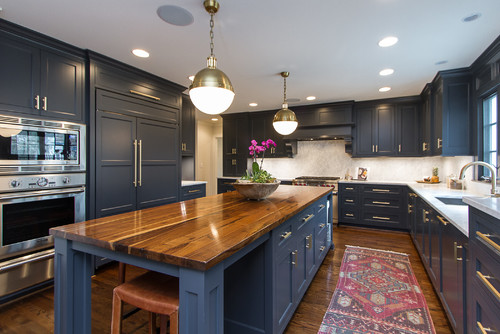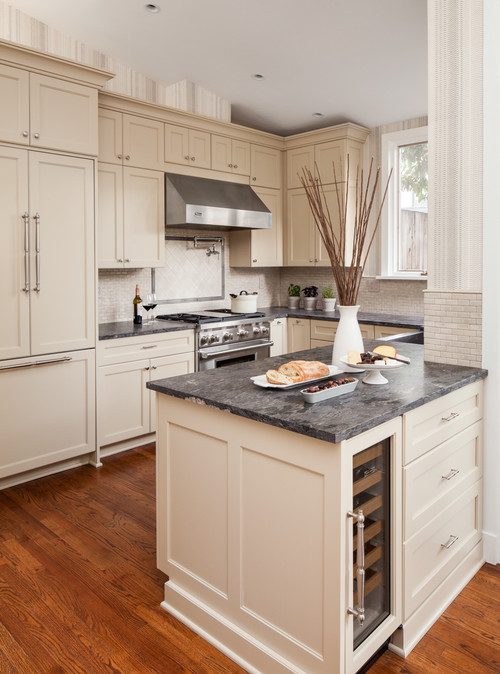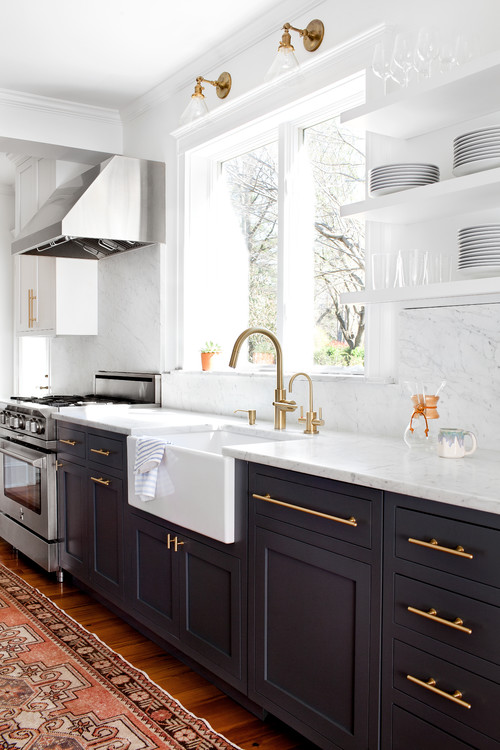

Where to Put Knobs and Handles on Kitchen Cabinets
The selection and placement of kitchen cabinet knobs and handles play a significant role in defining the overall aesthetics and functionality of your space. From choosing the right type, style, and finish to determining the ideal placement and installation, every aspect requires careful consideration to ensure a harmonious and efficient kitchen design. By keeping in mind the various factors discussed in this comprehensive guide, you can make informed decisions that cater to your personal preferences and the specific requirements of your kitchen.
Introduction
A. Importance of proper knob and handle placement in kitchen design
The kitchen is the heart of the home, where families and friends gather to share meals, memories, and laughter. A well-designed kitchen not only enhances the overall aesthetic appeal of your home but also improves the functionality and efficiency of the space. One often overlooked, yet essential aspect of kitchen design is the proper placement of knobs and handles on kitchen cabinets. These small details play a significant role in the usability, accessibility, and ergonomics of the kitchen.
The right placement of knobs and handles can make a significant difference in how you interact with your kitchen cabinets, ensuring that doors and drawers are easy to open and close, while minimizing the strain on your hands, wrists, and shoulders. Furthermore, strategically placed hardware can have a substantial impact on the visual harmony of your kitchen, creating a cohesive and well-balanced design.
B. Impact of knobs and handles on functionality and aesthetics
Functionality: Knobs and handles serve as essential touchpoints in any kitchen, enabling you to effortlessly access your cabinets and drawers. By placing them in convenient and intuitive locations, you can ensure that your kitchen functions smoothly and efficiently, minimizing the time and effort required to retrieve items during meal preparation or cleanup. Proper placement of hardware can also help reduce the likelihood of accidents, such as catching clothing on protruding handles or bumping into poorly positioned knobs.
Aesthetics: Beyond their practical function, knobs and handles contribute significantly to the overall appearance of your kitchen. With a wide array of styles, materials, and finishes available, these small elements can make a powerful design statement, accentuating the architectural details of your cabinetry and harmonizing with other elements in your kitchen, such as countertops, backsplashes, and appliances. The placement of knobs and handles can also influence the visual balance and symmetry of your kitchen, creating a polished and cohesive look that is both inviting and elegant.

Types of knobs and handles for kitchen cabinets
When selecting knobs and handles for your kitchen cabinets, it is essential to consider the different types available, as each can significantly impact the overall style, functionality, and comfort of your kitchen. In this section, we will provide a detailed overview of the most common types of knobs and handles, highlighting their unique features and benefits.
A. Round knobs
Round knobs are a classic and versatile option that can complement various kitchen styles, from traditional to modern. These knobs usually feature a simple, spherical design and are available in a wide range of materials, such as metal, glass, ceramic, and wood. Round knobs are easy to grasp and provide a secure grip, making them a practical choice for any kitchen.
B. Bar pulls
Bar pulls, also known as handle pulls, are elongated handles that attach to the cabinet door or drawer at two points. They offer a sleek and contemporary look, making them a popular choice for modern and minimalist kitchen designs. Bar pulls are available in various lengths, finishes, and materials, allowing you to customize the appearance of your cabinets. Additionally, their linear design makes them easy to grip, providing a comfortable and ergonomic experience.
C. Cup pulls
Cup pulls, sometimes referred to as bin pulls, are a type of handle that features a half-circle or semi-circular shape. They are typically recessed into the cabinet door or drawer, providing a secure and comfortable grip. Cup pulls are often found in traditional, farmhouse, or vintage-style kitchens, adding a touch of classic charm and character to the space. They are available in a variety of materials and finishes, making it easy to find a style that complements your kitchen design.
D. Recessed pulls
Recessed pulls are handles that are integrated into the cabinet door or drawer, creating a seamless and flush appearance. This type of handle is ideal for minimalist or contemporary kitchen designs, as they provide a sleek and streamlined look. Recessed pulls offer a discreet and unobtrusive grip, making them a suitable choice for compact or busy kitchen spaces. They are available in various materials and finishes, allowing you to coordinate them with your kitchen’s overall aesthetic.
E. Edge pulls
Edge pulls, also known as tab pulls or finger pulls, are a type of handle that is mounted to the edge of the cabinet door or drawer, allowing you to grip the hardware from the side or bottom. This type of handle offers a modern and minimalist look, making it an excellent choice for contemporary kitchen designs. Edge pulls are available in various lengths, materials, and finishes, enabling you to customize the appearance of your cabinets. Additionally, their slim profile ensures that they do not protrude into the kitchen space, reducing the risk of accidents and injuries.
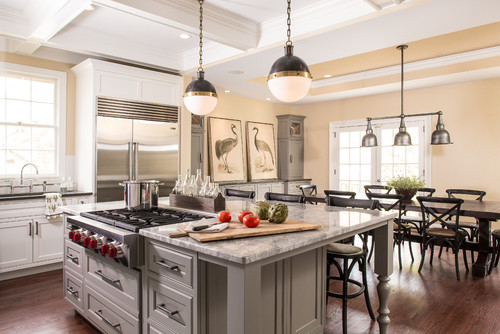
Determining the ideal placement for knobs and handles
A. Factors to consider
When determining the ideal placement for knobs and handles on your kitchen cabinets, it is crucial to consider several factors that can influence the functionality, accessibility, and overall appearance of your kitchen. These factors include the cabinet size and style, door and drawer function, and personal preference and usability.
- Cabinet size and style
The size and style of your kitchen cabinets play a significant role in determining the most suitable placement for knobs and handles. Consider the height, width, and depth of your cabinets, as well as any unique design features, such as decorative moldings or intricate details. By selecting the appropriate hardware and positioning it in a way that complements the cabinet’s proportions and design elements, you can create a cohesive and visually harmonious kitchen space.
- Door/drawer function
The function of each cabinet door and drawer should also be considered when determining the ideal placement for knobs and handles. For example, doors that open outward or upward may require different hardware positioning than those that swing open or slide. Similarly, drawers that are used frequently or store heavy items may benefit from handles that are easier to grip and provide better leverage. By taking into account the specific function of each door and drawer, you can ensure that your hardware placement supports efficient and effortless use of your kitchen.
- Personal preference and usability
Finally, your personal preferences and usability requirements should be taken into consideration when determining the ideal placement for knobs and handles. Consider factors such as the height of the users, accessibility requirements, and the overall layout and workflow of your kitchen. By tailoring the hardware placement to suit your individual needs and preferences, you can create a comfortable and user-friendly kitchen environment that enhances your daily experience.
B. Guidelines for placement
- Upper cabinets
For upper cabinets, knobs and handles should generally be placed on the lower corner of the door, opposite the hinge side. This placement allows for easy access and reduces the strain on your arms and shoulders when opening and closing the cabinet doors. If your upper cabinets feature decorative moldings or details, consider positioning the hardware so that it aligns with or complements these elements.
- Lower cabinets
On lower cabinets, knobs and handles should be positioned on the upper corner of the door, opposite the hinge side. This placement ensures easy access and comfortable use while minimizing the need to bend or stoop. In cases where the lower cabinets have a drawer above the door, it is recommended to align the handles or knobs of both the drawer and door for a cohesive appearance.
- Drawers
For drawers, knobs and handles should generally be centered horizontally and placed on the upper portion of the drawer front. This positioning allows for easy gripping and smooth opening and closing of the drawers. In the case of larger or deeper drawers, consider using two handles or longer bar pulls to provide additional leverage and support.
- Pantry doors
Pantry doors, especially full-height ones, may benefit from a slightly different hardware placement approach. Position the knob or handle at a comfortable height for easy access, typically around waist to shoulder level. If the pantry door has multiple sections, consider aligning the hardware with the upper cabinet handles or knobs to create a cohesive look.
- Corner cabinets
Corner cabinets can be tricky when it comes to hardware placement. Depending on the cabinet’s design, you may need to experiment with different positions to find the most comfortable and functional solution. For L-shaped corner cabinets, consider placing the knob or handle on the side of the door that provides the best access, while maintaining visual balance with the adjacent cabinets.
Measuring and marking for accurate installation
Installing knobs and handles on your kitchen cabinets requires precise measuring and marking to ensure a professional-looking result. In this section, we will provide a detailed overview of the tools required, a step-by-step guide to measuring and marking, and tips for ensuring a successful installation.
A. Tools required
To accurately measure and mark the placement of your knobs and handles, you will need the following tools:
- Tape measure: A reliable tape measure is essential for taking precise measurements of your cabinet doors and drawers.
- Pencil: A pencil is necessary for marking the points where you will drill holes for your hardware.
- Level: A level helps to ensure that your knobs and handles are properly aligned and evenly spaced.
- Drill and bits: A power drill and the appropriate size drill bits are needed for creating the holes in your cabinet doors and drawers for the installation of the knobs and handles.
B. Step-by-step guide to measuring and marking
- Determine the desired placement of your knobs or handles based on the guidelines discussed in the previous section.
- Using a tape measure, measure the distance from the edge of the cabinet door or drawer to the desired location of the hardware. Record this measurement.
- Measure the same distance from the opposite edge of the cabinet door or drawer and mark the point with a pencil.
- Repeat the process for all cabinet doors and drawers, ensuring that the measurements are consistent and accurate.
- Once all marks have been made, use a level to check that they are aligned correctly. Adjust the marks as needed to ensure proper alignment.
- If your handles require two holes, measure the distance between the attachment points on the handle. Then, measure and mark the second hole for each handle, ensuring that the distance between the marks matches the measurement on the handle.
- Before drilling, double-check all measurements and marks to ensure accuracy and alignment.
C. Tips for ensuring a successful installation
- Take your time: Measure and mark carefully to avoid mistakes. Double-check your measurements and marks before drilling to ensure a successful installation.
- Create a template: If you have many cabinets or drawers with the same hardware placement, consider creating a template out of cardboard or wood to help with consistent marking and drilling.
- Start with a small pilot hole: Before drilling the final hole size, consider drilling a small pilot hole to help guide the drill and prevent the wood from splitting or splintering.
- Use painter’s tape: Apply painter’s tape to the area where you will be drilling. This can help prevent the cabinet’s finish from chipping or cracking during the drilling process.
- Begin with a single cabinet or drawer: Install the hardware on one cabinet door or drawer first to ensure that you are satisfied with the placement and appearance before proceeding with the rest of your kitchen cabinets.
- Check your work: After installing the hardware, inspect the cabinets and drawers to ensure that the knobs and handles are securely attached, properly aligned, and functioning as intended.
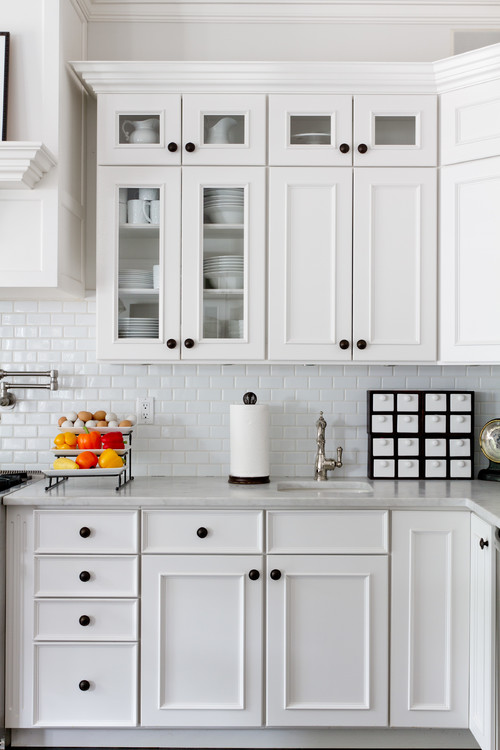
Popular handle and knob styles for various kitchen designs
The style of your knobs and handles can significantly impact the overall aesthetic of your kitchen. In this section, we will explore popular handle and knob styles that complement various kitchen designs, including traditional, modern, farmhouse, industrial, and minimalist styles.
A. Traditional
Traditional kitchen designs often feature classic and timeless elements, such as ornate moldings, raised panel cabinet doors, and warm color palettes. Popular handle and knob styles for traditional kitchens include:
- Antique brass or bronze finishes: These finishes add warmth and elegance to traditional kitchen cabinetry.
- Ornate designs: Intricate detailing, such as scrollwork or floral motifs, can complement the classic aesthetic of a traditional kitchen.
- Glass or crystal knobs: These knobs can lend a touch of sophistication and charm to your cabinets.
B. Modern
Modern kitchen designs are characterized by clean lines, sleek surfaces, and a minimal color palette. Popular handle and knob styles for modern kitchens include:
- Linear bar pulls: These elongated handles offer a contemporary and streamlined look, ideal for modern kitchens.
- Square or rectangular knobs: Geometric shapes can enhance the clean lines and simplicity of a modern design.
- Polished chrome, stainless steel, or brushed nickel finishes: These finishes complement the cool tones and sleek surfaces often found in modern kitchens.
C. Farmhouse
Farmhouse kitchens embody a cozy, rustic charm, with features such as shiplap walls, open shelving, and apron-front sinks. Popular handle and knob styles for farmhouse kitchens include:
- Cup or bin pulls: These semi-circular pulls evoke a vintage feel and complement the rustic elements of a farmhouse kitchen.
- Ceramic or porcelain knobs: Knobs with a crackled or hand-painted finish can add a touch of warmth and character to your cabinets.
- Aged or distressed finishes: Weathered brass, bronze, or iron finishes can enhance the cozy, lived-in atmosphere of a farmhouse kitchen.
D. Industrial
Industrial kitchens incorporate raw materials, such as exposed brick, concrete, and metal accents, creating a bold and edgy look. Popular handle and knob styles for industrial kitchens include:
- Pipe or wire pulls: Handles crafted from plumbing pipes or thick-gauge wire can emphasize the rugged aesthetic of an industrial kitchen.
- Rivet detailing: Hardware with rivet accents can add an interesting visual element to your cabinets.
- Matte black or raw metal finishes: These finishes complement the raw, unfinished materials commonly found in industrial kitchen designs.
E. Minimalist
Minimalist kitchens prioritize functionality and simplicity, often featuring unadorned cabinetry, neutral color schemes, and a clutter-free environment. Popular handle and knob styles for minimalist kitchens include:
- Recessed or edge pulls: These handles are integrated into the cabinet door or drawer, providing a sleek and unobtrusive look.
- Simple round knobs: Minimalist kitchens can benefit from the simplicity and understated elegance of basic round knobs.
- Brushed nickel, stainless steel, or matte black finishes: These finishes work well with the clean lines and neutral tones typically found in minimalist kitchens.
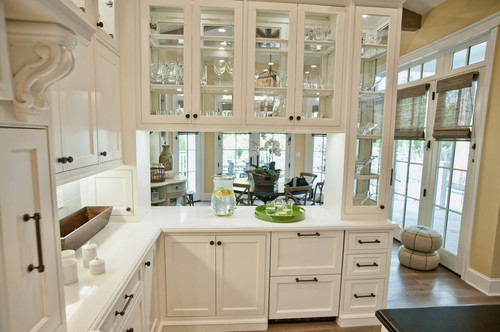
Updating your kitchen cabinets with new knobs and handles
Changing the knobs and handles on your kitchen cabinets is a simple and cost-effective way to give your space a fresh, updated look. In this section, we will discuss the benefits of updating your kitchen cabinets with new hardware, tips for selecting the right hardware, and a step-by-step guide on replacing old knobs and handles with new ones.
A. Cost-effective way to refresh your kitchen’s look
Replacing old knobs and handles with new ones is an affordable and impactful way to refresh your kitchen’s appearance. This small update can significantly transform the overall style and feel of your space without the need for a full-scale renovation. By carefully selecting new hardware that complements your existing kitchen design or introduces a new aesthetic, you can breathe new life into your cabinetry and enhance the visual appeal of your kitchen.
B. Tips for selecting the right hardware
When choosing new knobs and handles for your kitchen cabinets, consider the following tips to ensure a cohesive and visually appealing result:
- Assess your current kitchen style: Determine whether your kitchen leans towards traditional, modern, farmhouse, industrial, or minimalist, and choose hardware that complements or enhances that style.
- Consider the materials and finishes: Choose hardware materials and finishes that coordinate with your existing kitchen elements, such as appliances, faucets, and lighting fixtures.
- Test the functionality: Before making a final decision, ensure that the new knobs or handles are comfortable to grip and easy to use.
- Determine the appropriate size: Choose hardware that is proportionate to the size of your cabinet doors and drawers to create a balanced appearance.
C. How to replace old knobs and handles with new ones
Follow these steps to replace your old knobs and handles with new ones:
- Remove the existing hardware: Using a screwdriver, carefully remove the screws that secure the old knobs or handles to the cabinet doors and drawers. Set aside the old hardware and screws.
- Clean the cabinet surfaces: Before installing the new hardware, clean the surfaces of your cabinet doors and drawers to remove any dirt or residue.
- Prepare the new hardware: Unpack your new knobs and handles, ensuring that all necessary screws and components are included.
- Install the new knobs and handles: Align the new hardware with the existing holes in your cabinet doors and drawers. If the new hardware requires different hole placements, fill the old holes with wood filler and drill new holes according to the manufacturer’s instructions. Attach the new hardware using the included screws, tightening them securely with a screwdriver.
- Inspect the installation: After installing the new hardware, check that the knobs and handles are properly aligned, securely attached, and functioning as intended.
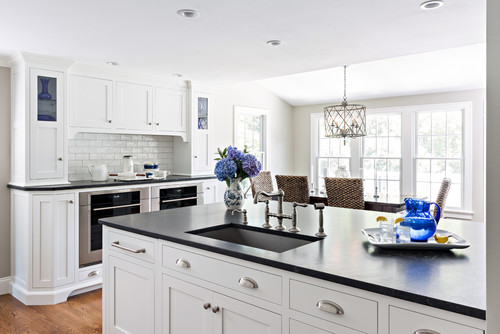
Ergonomics and accessibility in knob and handle placement
Ergonomics and accessibility play a crucial role in ensuring that your kitchen is comfortable, safe, and usable for all individuals, regardless of their age, size, or physical abilities. In this section, we will discuss the importance of ergonomics in knob and handle placement, design considerations for individuals with disabilities, and universal design principles that promote inclusivity and functionality.
A. Importance of ergonomics for comfort and ease of use
Ergonomics is the study of designing products, systems, and environments to fit the people who use them. In terms of kitchen design, ergonomics considers factors such as the height, reach, and grip strength of users to ensure that knobs and handles are placed in positions that promote comfort, ease of use, and efficiency. By implementing ergonomic principles in your kitchen hardware placement, you can minimize the risk of strain, injury, or fatigue, and create a user-friendly environment that enhances the daily experience of all users.
B. Design considerations for individuals with disabilities
When designing your kitchen, it is important to consider the needs of individuals with disabilities or limited mobility. Knob and handle placement can greatly impact the accessibility and usability of your kitchen cabinets and drawers for those with specific requirements. Some design considerations for individuals with disabilities include:
- Lever-style handles: Opt for lever-style handles instead of knobs, as they are typically easier to grip and operate for individuals with limited hand strength or dexterity.
- Lower mounting height: Position knobs and handles lower on cabinet doors and drawers to accommodate individuals who use wheelchairs or have difficulty reaching higher locations.
- Pull-out shelves and drawers: Consider installing pull-out shelves and drawers with easy-to-grip handles that allow for better access to stored items, especially in lower cabinets.
- Loop or D-shaped handles: These handle styles can be more accessible for individuals with disabilities, as they can be operated using a closed fist or with limited finger movement.
C. Universal design principles
Universal design is an approach that seeks to create environments and products that are usable and accessible by all people, regardless of their age, size, or abilities. Incorporating universal design principles in your kitchen hardware placement can promote a more inclusive and functional space for everyone. Some universal design principles to consider include:
- Flexibility: Choose hardware and placements that accommodate a wide range of user preferences and abilities, ensuring that your kitchen is usable by individuals with varying levels of strength, dexterity, and mobility.
- Simple and intuitive use: Select knobs and handles that are easy to understand and operate, minimizing the need for complex instructions or actions.
- Tolerance for error: Design your kitchen with knobs and handles that minimize the risk of accidents or unintended actions, such as a handle that is less likely to catch on clothing or bags.
- Low physical effort: Opt for hardware and placements that allow users to access and operate cabinets and drawers with minimal effort and strain.
- Adequate size and space: Provide ample space around knobs and handles, ensuring that users can comfortably reach and operate them, regardless of their body size or posture.
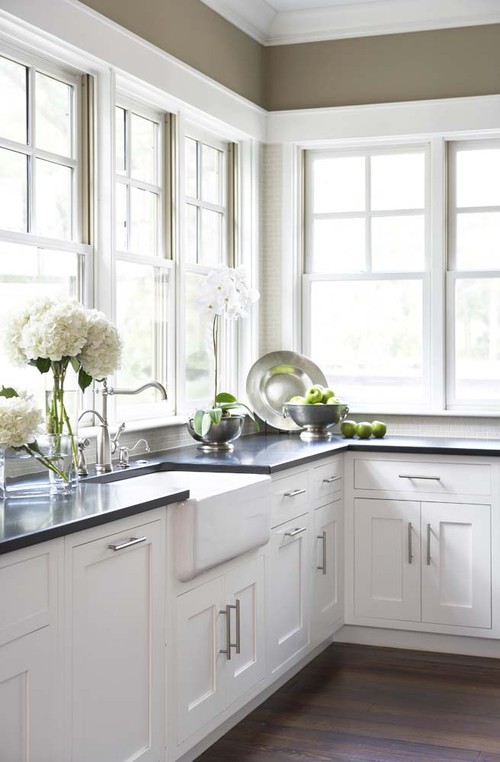
Mixing and matching knobs and handles for a unique look
Incorporating a mix of knobs and handles in your kitchen design can create visual interest and a customized look that reflects your personal style. In this section, we will discuss the pros and cons of using different hardware styles, offer tips for successfully mixing and matching hardware for a cohesive design, and provide examples of mixed hardware combinations.
A. Pros and cons of using different hardware styles
Pros:
- Personalization: Mixing and matching knobs and handles allows you to create a unique look that reflects your individual taste and style.
- Visual interest: Combining different hardware styles can add depth and texture to your kitchen design, preventing it from appearing too uniform or monotonous.
- Functionality: Using different types of hardware for various cabinets and drawers can enhance their functionality, such as using handles for larger drawers and knobs for smaller doors.
Cons:
- Cohesiveness: Mixing and matching hardware styles can be challenging to execute successfully, and if not done carefully, your kitchen may appear disjointed or cluttered.
- Time-consuming: Selecting and coordinating different hardware styles can be more time-consuming than choosing a single style for all cabinets and drawers.
- Resale considerations: If you plan to sell your home in the future, potential buyers may prefer a more cohesive or neutral hardware style.
B. How to successfully mix and match for a cohesive design
To successfully mix and match knobs and handles in your kitchen design, consider the following tips:
- Establish a common element: Select hardware with at least one common element, such as material, finish, or shape, to create a sense of unity and cohesiveness.
- Balance the styles: Distribute the different hardware styles evenly throughout the kitchen to maintain visual balance and prevent certain areas from appearing too busy or disjointed.
- Limit the variety: Avoid using too many different hardware styles, as this can make your kitchen appear cluttered or chaotic. Stick to two or three styles for a harmonious look.
- Consider the overall design: Ensure that the mixed hardware styles complement the overall aesthetic of your kitchen, whether it be traditional, modern, farmhouse, industrial, or minimalist.
C. Examples of mixed hardware combinations
- Traditional and modern: Pair traditional knobs with sleek bar handles to create an elegant yet contemporary look that bridges the gap between classic and modern design elements.
- Vintage and industrial: Combine vintage-inspired cup pulls with industrial pipe handles for a unique blend of old-world charm and urban edge.
- Geometric and organic: Mix geometric square or rectangular knobs with organic, curved handles to add visual interest and contrast in a modern or minimalist kitchen.
- Mixed metals: Use hardware in different metal finishes, such as brushed nickel knobs with brass handles, to create a dynamic and visually engaging design.
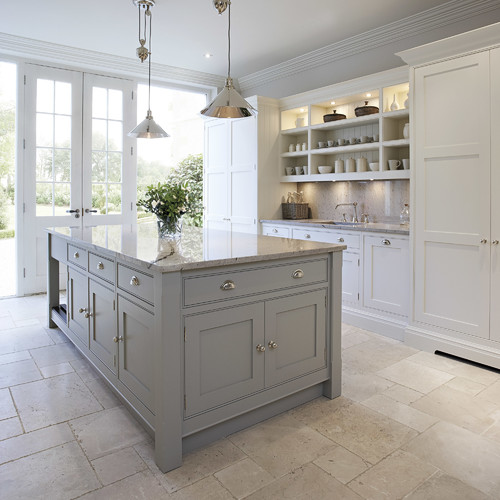
Using handle-free cabinets in modern kitchen designs
Handle-free cabinets have become increasingly popular in modern kitchen designs, offering a sleek and minimalist aesthetic. In this section, we will provide an overview of handle-free cabinets, discuss various handle-free cabinet mechanisms, and explore the advantages and disadvantages of this cabinetry style.
A. Overview of handle-free cabinets
Handle-free cabinets, also known as “touchless” or “handleless” cabinets, are designed without traditional knobs or handles. This design feature creates a streamlined and uncluttered appearance, as the cabinet doors and drawers seamlessly blend with the surrounding cabinetry. Handle-free cabinets are particularly suited to modern and minimalist kitchen designs, where simplicity and clean lines are key elements.
B. Types of handle-free cabinet mechanisms
There are several mechanisms available for handle-free cabinets, each with its own unique functionality and aesthetic appeal:
- Push-to-open: Push-to-open cabinets are equipped with spring-loaded mechanisms that allow the doors or drawers to open with a gentle push. When closed, the doors and drawers sit flush with the cabinet face, creating a seamless appearance.
- Integrated pull channels: These cabinets feature a recessed channel or groove built into the top or bottom edge of the door or drawer. The channel provides a grip for users to pull the cabinet open without the need for external handles or knobs.
- Tip-on systems: Tip-on systems are similar to push-to-open mechanisms but rely on a magnetic or mechanical latch to hold the cabinet door or drawer in place. A gentle tap or push on the door or drawer disengages the latch, allowing it to open.
C. Advantages and disadvantages of handle-free cabinets
Advantages:
- Aesthetic appeal: Handle-free cabinets create a sleek, modern, and minimalist look that complements contemporary kitchen designs.
- Easy cleaning: With no external hardware, handle-free cabinets are easy to clean and maintain, as there are fewer crevices where dirt and grime can accumulate.
- Streamlined design: The absence of protruding hardware reduces the risk of snagging clothing or bags, making handle-free cabinets a practical option in busy or high-traffic areas.
Disadvantages:
- Cost: Handle-free cabinets can be more expensive than traditional cabinets due to the specialized mechanisms and manufacturing techniques required.
- Functionality: Some users may find handle-free cabinets less intuitive or more challenging to open than cabinets with traditional knobs or handles, particularly those with limited hand strength or dexterity.
- Potential for wear and tear: The frequent contact between hands and cabinet surfaces in handle-free designs may result in more visible fingerprints, smudges, or wear on the cabinet finish over time.
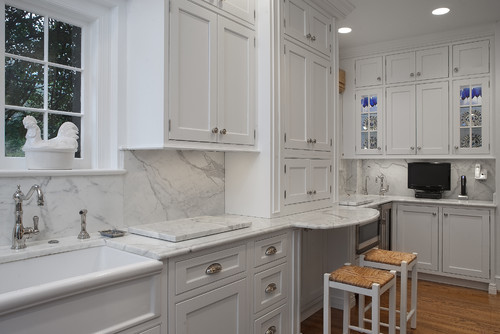
How to choose the right finish for your knobs and handles
Selecting the right finish for your kitchen cabinet knobs and handles is essential for creating a cohesive and visually appealing design. In this section, we will discuss factors to consider when choosing a finish, and explore popular finish options and their characteristics.
A. Factors to consider when selecting a finish
- Overall kitchen style: Consider the overall style of your kitchen, whether it’s traditional, modern, farmhouse, industrial, or minimalist. Choose a finish that complements and enhances your chosen aesthetic.
- Color of cabinets and other elements: The finish of your knobs and handles should coordinate well with the color of your cabinets, countertops, appliances, and other design elements in your kitchen. Pay attention to how the finish interacts with different colors and materials to create a harmonious look.
- Durability and maintenance: Some finishes may show signs of wear, tarnishing, or discoloration over time, while others may require more frequent cleaning to maintain their appearance. Consider the durability and maintenance requirements of various finishes when making your decision.
B. Popular finish options
- Brushed nickel: Brushed nickel is a versatile finish that features a soft, matte texture and a subtle sheen. It is an excellent choice for both traditional and contemporary kitchens, as it complements a wide range of colors and materials. Brushed nickel is also highly resistant to tarnishing and corrosion, making it a durable option.
- Chrome: Chrome is a highly reflective and polished finish that adds a sleek, modern touch to kitchen designs. This finish is ideal for contemporary and minimalist kitchens, and pairs well with stainless steel appliances. Chrome is easy to clean but may show fingerprints and smudges more readily than other finishes.
- Oil-rubbed bronze: Oil-rubbed bronze is a rich, dark finish with warm, coppery undertones that give it an aged, antique appearance. This finish is well-suited to traditional and farmhouse-style kitchens and pairs beautifully with warm wood tones and natural materials. Oil-rubbed bronze is relatively durable but may develop a patina over time, adding to its charm.
- Brass: Brass is a warm, golden finish that adds a touch of elegance and sophistication to kitchen designs. It works well in both traditional and modern settings and pairs beautifully with a variety of colors, including white, gray, and navy blue. Brass is prone to tarnishing over time but can be easily polished to maintain its luster.
- Matte black: Matte black is a bold, dramatic finish that makes a striking statement in kitchen designs. This finish is well-suited to modern, industrial, and minimalist kitchens and pairs well with a wide range of cabinet colors and materials. Matte black is highly durable and resistant to fingerprints and smudges, making it a low-maintenance option.
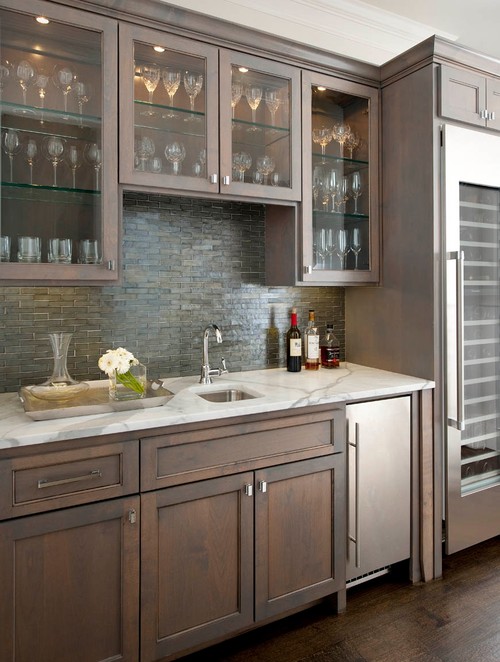
The impact of handle size on cabinet functionality
The size of the handles on your kitchen cabinets plays a significant role in determining the functionality and overall user experience in your kitchen. In this section, we will discuss how handle size affects ease of use, provide guidelines for selecting the appropriate handle size, and offer tips for balancing aesthetics and functionality when choosing handles.
A. How handle size affects ease of use
Handle size can impact the usability of your cabinets in several ways:
- Grip comfort: The size of the handle affects how comfortable it is to grip and pull, which can influence the overall ease of use. Handles that are too small may be difficult to grip, while handles that are too large may feel unwieldy or awkward.
- Accessibility: The size of the handle can impact how easily the cabinet doors and drawers can be opened and closed, particularly for individuals with limited hand strength or dexterity.
- Clearance: Larger handles may require more clearance from adjacent cabinets, appliances, or other kitchen elements, which can impact the overall functionality and layout of your kitchen.
B. Guidelines for selecting the appropriate handle size
To select the appropriate handle size for your kitchen cabinets, consider the following guidelines:
- Cabinet size and style: Choose handles that are proportional to the size and style of your cabinets. For instance, larger cabinets may require larger handles, while smaller cabinets or more delicate designs may call for smaller handles.
- User preferences and needs: Consider the preferences and needs of those who will be using the kitchen, such as family members with specific accessibility requirements or children who may have difficulty gripping larger handles.
- Visual balance: Ensure that the handle size is visually balanced with the overall design of your kitchen, including the cabinet style, hardware finish, and other design elements.
C. Tips for balancing aesthetics and functionality
When choosing handles for your kitchen cabinets, keep these tips in mind to balance aesthetics and functionality:
- Test different handle sizes: Try out various handle sizes in person to determine which size feels the most comfortable and easy to use for your specific needs.
- Mix and match: If you have a variety of cabinet sizes and styles, consider using different handle sizes for different cabinets to create a visually interesting and functional design.
- Don’t sacrifice function for style: While aesthetics are important, prioritize functionality when choosing handle size. Opt for a handle that is easy to grip and use, even if it may not be your first choice from a design perspective.
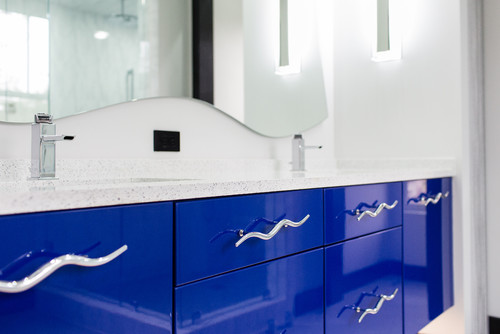
DIY vs. professional installation of knobs and handles
When it comes to installing knobs and handles on your kitchen cabinets, you may be considering whether to tackle the project yourself or hire a professional. In this section, we will discuss factors to consider when deciding between DIY or professional installation, explore the pros and cons of each option, and offer tips for finding a reliable professional installer.
A. Factors to consider when deciding on DIY or professional installation
- Experience and skill level: Assess your own experience and skill level with home improvement projects, particularly those involving drilling and precise measurements. If you have limited experience, a professional installation may be the better option.
- Tools and equipment: Determine whether you have the necessary tools and equipment for the installation, such as a drill, drill bits, a level, and a tape measure. If not, weigh the cost of purchasing these items against the cost of professional installation.
- Time and effort: Consider the amount of time and effort you are willing to invest in the project. Installing knobs and handles can be time-consuming, especially for larger kitchens or complex cabinet layouts.
B. Pros and cons of each option
DIY installation:
Pros:
- Cost savings: Installing knobs and handles yourself can save money on labor costs associated with professional installation.
- Personal satisfaction: Completing the project yourself can provide a sense of accomplishment and personal satisfaction.
- Flexibility: DIY installation allows you to work on the project at your own pace and make adjustments as needed.
Cons:
- Potential for mistakes: Inexperience or lack of precision can lead to misaligned or improperly installed hardware, which may require additional time and effort to correct.
- Risk of damage: Incorrectly drilling holes or using improper techniques can damage your cabinets or the hardware itself.
Professional installation:
Pros:
- Expertise: Professional installers have the experience and skills to ensure accurate and precise installation.
- Time savings: Hiring a professional can save you time and effort, allowing you to focus on other aspects of your kitchen design or renovation.
- Quality assurance: A professional installer can help you avoid costly mistakes and potential damage to your cabinets or hardware.
Cons:
- Additional cost: Hiring a professional installer will increase the overall cost of your kitchen hardware project.
- Scheduling: You may need to work around the availability of a professional installer, which could cause delays in your project timeline.
C. Tips for finding a reliable professional installer
- Seek recommendations: Ask friends, family members, or neighbors for recommendations of reliable installers they have worked with in the past.
- Research online reviews: Check online review platforms such as Google Reviews or Yelp to read about others’ experiences with local installers.
- Verify qualifications and experience: Ensure that the installer you choose has the necessary qualifications, experience, and any required licenses or certifications for your area.
- Request quotes: Obtain quotes from multiple installers to compare costs and services offered. Be sure to ask for a detailed breakdown of what is included in the quote.
- Ask for references: Request references from previous clients to verify the quality of the installer’s work and their overall satisfaction with the project.
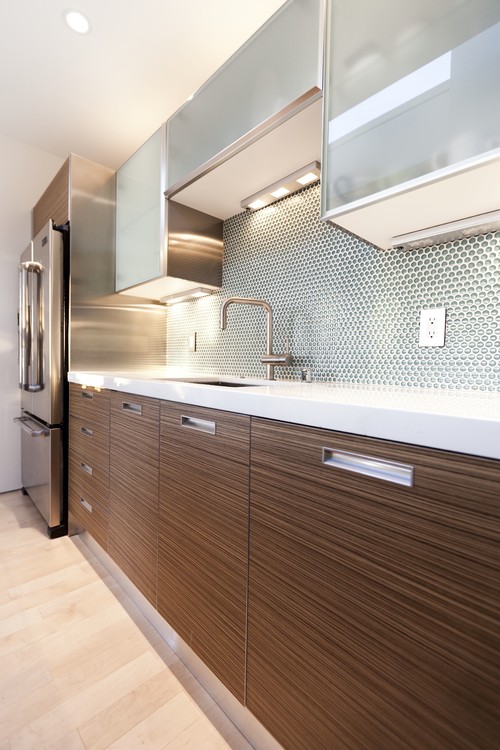
Incorporating vintage and antique knobs and handles
Utilizing vintage and antique knobs and handles in your kitchen design can add character, charm, and a touch of history to your space. In this section, we will discuss the advantages of using vintage hardware, explore where to source unique vintage and antique pieces, and offer tips for integrating these elements into your kitchen design.
A. Advantages of using vintage hardware
- Unique character: Vintage and antique knobs and handles can bring a one-of-a-kind look to your kitchen, setting it apart from more generic, mass-produced designs.
- Quality craftsmanship: Older hardware often features high-quality materials and craftsmanship, which can contribute to the overall durability and longevity of your cabinet hardware.
- Environmental benefits: Incorporating vintage and antique hardware can be an eco-friendly choice, as it reduces the demand for new materials and production processes.
- Historical appeal: Vintage and antique pieces often have a story to tell, which can add depth and interest to your kitchen design.
B. Where to source vintage and antique pieces
- Antique stores: Explore local antique stores and markets to find unique and interesting hardware pieces. Be prepared to spend time hunting for the perfect items, as inventory can vary greatly.
- Online marketplaces: Websites such as eBay, Etsy, and Chairish can be excellent sources for vintage and antique hardware. Be sure to read descriptions and reviews carefully, and don’t hesitate to ask sellers questions about the items.
- Architectural salvage yards: These businesses specialize in reclaiming materials and items from older buildings, including hardware. Visiting a local architectural salvage yard can yield a treasure trove of vintage and antique knobs and handles.
- Estate sales and auctions: Keep an eye out for estate sales and auctions in your area, as they can be a source of unique and high-quality vintage hardware.
C. Tips for integrating vintage elements into your kitchen design
- Be mindful of style and scale: Choose vintage hardware that complements the style and scale of your kitchen cabinets and overall design. The pieces should enhance the aesthetic without overwhelming it.
- Mix and match: Don’t be afraid to mix and match different vintage pieces for a more eclectic and personalized look. Just ensure that the pieces have a cohesive feel and don’t clash with one another or the rest of your kitchen design.
- Restore and refinish: Some vintage hardware may require cleaning, polishing, or refinishing to restore its original beauty. Be prepared to invest time and effort in this process or consider hiring a professional if needed.
- Incorporate other vintage elements: To create a harmonious design, consider incorporating other vintage elements in your kitchen, such as lighting fixtures, faucets, or decorative accents.
Frequently asked questions about knobs and handles
- Can I mix knobs and handles in my kitchen design?
Yes, mixing knobs and handles can create a unique and personalized look in your kitchen. The key is to maintain a cohesive design by selecting hardware that complements the overall style, materials, and finishes of your cabinets and other kitchen elements.
- How do I choose the right size of knobs and handles for my cabinets?
Consider the scale of your cabinets and drawers when selecting the appropriate size of knobs and handles. Larger cabinets or drawers may require more substantial hardware for ease of use and to maintain visual balance. For a more detailed guide, refer to section XII on the impact of handle size on cabinet functionality.
- What is the standard distance between the screw holes on handles?
There is no absolute standard for the distance between screw holes on handles, but some common measurements include 3 inches (76mm), 3.75 inches (96mm), and 5 inches (128mm). Always measure the distance between the screw holes on your existing handles or consult the manufacturer’s specifications before purchasing new hardware.
- How do I clean and maintain my knobs and handles?
Regular cleaning and maintenance can help prolong the life and appearance of your cabinet hardware. Use a soft, damp cloth to wipe away dirt and fingerprints, and dry the hardware thoroughly afterward. Avoid using abrasive cleaners or harsh chemicals that may damage the finish. For more specific cleaning instructions, consult the manufacturer’s guidelines for your particular hardware.
- Should I choose the same finish for my knobs, handles, and other kitchen hardware?
While it is not mandatory to use the same finish for all of your kitchen hardware, doing so can create a cohesive and harmonious look. However, you may also choose to mix finishes for a more eclectic and personalized design. Consider the overall style of your kitchen and the finishes of your appliances, lighting, and plumbing fixtures when making your decision.
- What is the standard height for installing knobs and handles on upper and lower cabinets?
There is no one-size-fits-all answer to this question, as the ideal height for knobs and handles can vary depending on factors such as cabinet size, style, and personal preference. However, a common guideline is to place knobs and handles on upper cabinets approximately 2.5 to 3 inches (63-76mm) from the bottom corner of the door, and on lower cabinets 2.5 to 3 inches (63-76mm) from the top corner of the door. For a more detailed guide, refer to section III on determining the ideal placement for knobs and handles.
- How do I choose between knobs and handles for my kitchen cabinets?
The choice between knobs and handles comes down to personal preference, the style of your kitchen, and the functionality you desire. Knobs are often more suitable for smaller cabinet doors and offer a classic look, while handles are ideal for larger doors and drawers and can provide a more modern appearance. Consider the overall design of your kitchen and your specific needs when making your decision.
- Can I use different types of handles for various cabinets and drawers?
Yes, you can use different types of handles for various cabinets and drawers as long as they complement one another and maintain a cohesive design. Mixing handle styles can add visual interest and create a more personalized look in your kitchen.
- Do I need to hire a professional to install my cabinet knobs and handles?
While it is possible to install knobs and handles yourself, hiring a professional can ensure accurate and secure installation, particularly if you are inexperienced or dealing with unique cabinet materials or designs. Weigh the pros and cons of DIY vs. professional installation (section XIII) and consider your level of expertise, available time, and the complexity of the project when making your decision.
- What is the difference between a center-to-center measurement and an overall length measurement for handles?
The center-to-center measurement refers to the distance between the screw holes on a handle, while the overall length measurement represents the total length of the handle from end to end. Always confirm the center-to-center measurement before purchasing new handles, as this will ensure proper fit and alignment with your existing cabinet doors and drawers.
- Are there any special considerations for selecting knobs and handles for a kitchen with children or individuals with disabilities?
When designing a kitchen for families with children or individuals with disabilities, it is essential to prioritize safety, comfort, and ease of use. Opt for hardware with smooth, rounded edges to minimize the risk of injury, and consider larger handles or levers that are easy to grip and operate. Incorporating universal design principles (section VIII) can help create an accessible and functional space for everyone.
- How can I update my kitchen’s look without replacing the entire cabinet?
Replacing knobs and handles is a cost-effective way to refresh your kitchen’s look without undertaking a full cabinet replacement. Updating your hardware can have a significant impact on the overall appearance of your kitchen, giving it a fresh, modern, or unique style, depending on the hardware you choose. Refer to section VI for more information on updating your kitchen cabinets with new knobs and handles.


